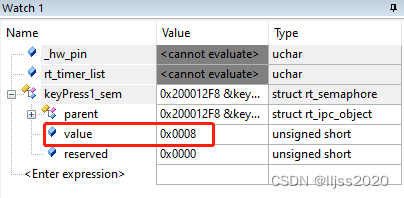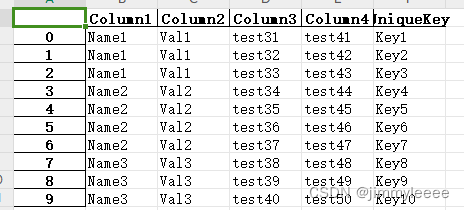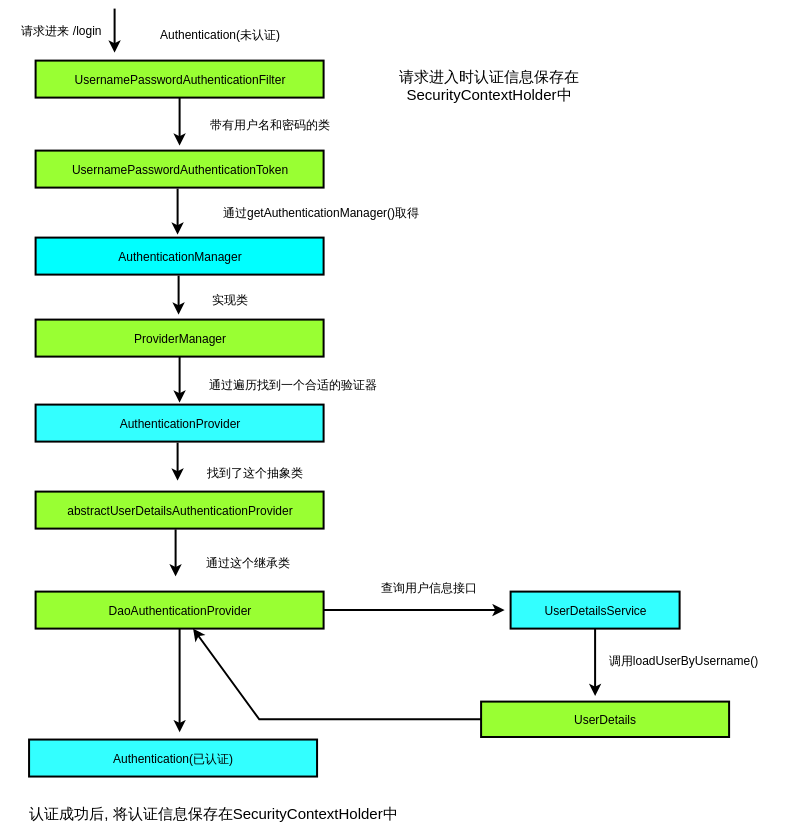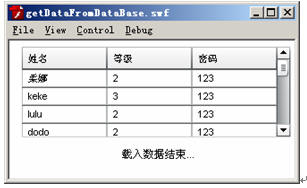最重要的一条规则
编写代码时最重要的一条规则是:检查周围的代码并尝试模仿它。
作为维护人员,如果收到的补丁明显与周围代码的编码风格不同,这是令人沮丧的。这是不尊重人的,就像某人穿着泥泞的鞋子走进一间一尘不染的房子。
因此,无论本文推荐的是什么,如果已经编写了代码并且您正在对其进行修补,请保持其当前的样式一致,即使它不是您最喜欢的样式。

一般规则
这里列出了最明显和最重要的一般规则。在你继续阅读其他章节之前,请仔细检查它们。
-
使用C99标准
-
不使用制表符,而是使用空格
-
每个缩进级别使用4个空格
-
在关键字和左括号之间使用一个空格
-
在函数名和左括号之间不要使用空格
int32_t a = sum(4, 3); /* OK */
int32_t a = sum (4, 3); /* Wrong */
-
不要在变量/函数/宏/类型中使用__或_前缀。这是为C语言本身保留的
-
对于严格的模块私有函数,使用prv_ name前缀
-
对于包含下划线_ char的变量/函数/宏/类型,只能使用小写字母
-
左花括号总是与关键字(for, while, do, switch, if,…)在同一行
size_t i;
for (i = 0; i < 5; ++i) { /* OK */
}
for (i = 0; i < 5; ++i){ /* Wrong */
}
for (i = 0; i < 5; ++i) /* Wrong */
{
}
-
在比较操作符和赋值操作符之前和之后使用单个空格
int32_t a;
a = 3 + 4; /* OK */
for (a = 0; a < 5; ++a) /* OK */
a=3+4; /* Wrong */
a = 3+4; /* Wrong */
for (a=0;a<5;++a) /* Wrong */
-
每个逗号后用单空格
func_name(5, 4); /* OK */
func_name(4,3); /* Wrong */
-
不要初始化静态和全局变量为0(或NULL),让编译器为您做
static int32_t a; /* OK */
static int32_t b = 4; /* OK */
static int32_t a = 0; /* Wrong */
void
my_func(void) {
static int32_t* ptr;/* OK */
static char abc = 0;/* Wrong */
}
-
在同一行中声明所有相同类型的局部变量
void
my_func(void) {
char a; /* OK */
char b; /* Wrong, variable with char type already exists */
char a, b; /* OK */
}
-
按顺序声明局部变量
i.自定义结构和枚举
ii.整数类型,更宽的无符号类型优先
iii.单/双浮点
int
my_func(void) {
/* 1 */
my_struct_t my; /* First custom structures */
my_struct_ptr_t* p; /* Pointers too */
/* 2 */
uint32_t a;
int32_t b;
uint16_t c;
int16_t g;
char h;
/* ... */
/* 3 */
double d;
float f;
}
-
总是在块的开头声明局部变量,在第一个可执行语句之前
-
在for循环中声明计数器变量
/* OK */
for (size_t i = 0; i < 10; ++i)
/* OK, if you need counter variable later */
size_t i;
for (i = 0; i < 10; ++i) {
if (...) {
break;
}
}
if (i == 10) {
}
/* Wrong */
size_t i;
for (i = 0; i < 10; ++i) ...
-
避免在声明中使用函数调用来赋值变量,除了单个变量
void
a(void) {
/* Avoid function calls when declaring variable */
int32_t a, b = sum(1, 2);
/* Use this */
int32_t a, b;
b = sum(1, 2);
/* This is ok */
uint8_t a = 3, b = 4;
}
-
除了char、float或double之外,始终使用stdint.h标准库中声明的类型。例如,8位的uint8_t等
-
不要使用stdbool.h库。分别使用1或0表示真或假
/* OK */
uint8_t status;
status = 0;
/* Wrong */
#include <stdbool.h>
bool status = true;
-
永远不要与真实相比较。例如,使用
if(check_func()){…}替换if (check_func() == 1) -
总是将指针与空值进行比较
void* ptr;
/* ... */
/* OK, compare against NULL */
if (ptr == NULL || ptr != NULL) {
}
/* Wrong */
if (ptr || !ptr) {
}
-
总是使用前增量(和递减),而不是后增量(和递减)
int32_t a = 0;
...
a++; /* Wrong */
++a; /* OK */
for (size_t j = 0; j < 10; ++j) {} /* OK */
-
总是使用size_t作为长度或大小变量
-
如果函数不应该修改指针所指向的内存,则总是使用const作为指针
-
如果不应该修改函数的形参或变量,则总是使用const
/* When d could be modified, data pointed to by d could not be modified */
void
my_func(const void* d) {
}
/* When d and data pointed to by d both could not be modified */
void
my_func(const void* const d) {
}
/* Not required, it is advised */
void
my_func(const size_t len) {
}
/* When d should not be modified inside function, only data pointed to by d could be modified */
void
my_func(void* const d) {
}
-
当函数可以接受任何类型的指针时,总是使用void *,不要使用uint8_t *。函数在实现时必须注意正确的类型转换
/*
* To send data, function should not modify memory pointed to by `data` variable
* thus `const` keyword is important
*
* To send generic data (or to write them to file)
* any type may be passed for data,
* thus use `void *`
*/
/* OK example */
void
send_data(const void* data, size_t len) { /* OK */
/* Do not cast `void *` or `const void *` */
const uint8_t* d = data;/* Function handles proper type for internal usage */
}
void
send_data(const void* data, int len) { /* Wrong, not not use int */
}
-
总是使用括号和sizeof操作符
-
不要使用变长数组。使用动态内存分配代替标准C malloc和自由函数,或者如果库/项目提供了自定义内存分配,使用它的实现
看看LwMEM,一个自定义内存管理库。
/* OK */
#include <stdlib.h>
void
my_func(size_t size) {
int32_t* arr;
arr = malloc(sizeof(*arr) * n); /* OK, Allocate memory */
arr = malloc(sizeof *arr * n); /* Wrong, brackets for sizeof operator are missing */
if (arr == NULL) {
/* FAIL, no memory */
}
free(arr); /* Free memory after usage */
}
/* Wrong */
void
my_func(size_t size) {
int32_t arr[size]; /* Wrong, do not use VLA */
}
-
总是将variable与0进行比较,除非它被视为布尔类型
-
永远不要将布尔处理的变量与0或1进行比较。用NOT(!)代替
size_t length = 5; /* Counter variable */
uint8_t is_ok = 0; /* Boolean-treated variable */
if (length) /* Wrong, length is not treated as boolean */
if (length > 0) /* OK, length is treated as counter variable containing multi values, not only 0 or 1 */
if (length == 0) /* OK, length is treated as counter variable containing multi values, not only 0 or 1 */
if (is_ok) /* OK, variable is treated as boolean */
if (!is_ok) /* OK, -||- */
if (is_ok == 1) /* Wrong, never compare boolean variable against 1! */
if (is_ok == 0) /* Wrong, use ! for negative check */
-
对于注释,总是使用/* comment */,即使是单行注释
-
在头文件中总是包含带有extern关键字的c++检查
-
每个函数都必须包含doxygen-enabled注释,即使函数是静态的
-
使用英文名称/文本的函数,变量,注释
-
变量使用小写字母
-
如果变量包含多个名称,请使用下划线。force_redraw。不要使用forceRedraw
-
对于C标准库的包含文件,请始终使用<和>。例如,# include < stdlib.h >
-
对于自定义库,请始终使用""。例如,# include“my_library.h”
-
当转换为指针类型时,总是将星号与类型对齐,例如。uint8_t* t = (uint8_t*)var_width_diff_type
-
始终尊重项目或库中已经使用的代码风格
注释
-
不允许以//开头的注释。总是使用/* comment */,即使是单行注释
//This is comment (wrong)
/* This is comment (ok) */
-
对于多行注释,每行使用空格+星号
/*
* This is multi-line comments,
* written in 2 lines (ok)
*/
/**
* Wrong, use double-asterisk only for doxygen documentation
*/
/*
* Single line comment without space before asterisk (wrong)
*/
/*
* Single line comment in multi-line configuration (wrong)
*/
/* Single line comment (ok) */
-
注释时使用12个缩进(12 * 4个空格)偏移量。如果语句大于12个缩进,将注释4-空格对齐(下面的例子)到下一个可用缩进
void
my_func(void) {
char a, b;
a = call_func_returning_char_a(a); /* This is comment with 12*4 spaces indent from beginning of line */
b = call_func_returning_char_a_but_func_name_is_very_long(a); /* This is comment, aligned to 4-spaces indent */
}
函数
-
每个可以从模块外部访问的函数都必须包含函数原型(或声明)
-
函数名必须小写,可以用下划线_分隔
/* OK */
void my_func(void);
void myfunc(void);
/* Wrong */
void MYFunc(void);
void myFunc();
-
当函数返回指针时,将星号对齐到返回类型
/* OK */
const char* my_func(void);
my_struct_t* my_func(int32_t a, int32_t b);
/* Wrong */
const char *my_func(void);
my_struct_t * my_func(void);
-
对齐所有的功能原型(使用相同/相似的功能)以提高可读性
/* OK, function names aligned */
void set(int32_t a);
my_type_t get(void);
my_ptr_t* get_ptr(void);
/* Wrong */
void set(int32_t a);
const char * get(void);
-
函数实现必须在单独的行中包含返回类型和可选的其他关键字
/* OK */
int32_t
foo(void) {
return 0;
}
/* OK */
static const char*
get_string(void) {
return "Hello world!\r\n";
}
/* Wrong */
int32_t foo(void) {
return 0;
}
变量
-
使变量名全部小写,下划线_字符可选
/* OK */
int32_t a;
int32_t my_var;
int32_t myvar;
/* Wrong */
int32_t A;
int32_t myVar;
int32_t MYVar;
-
按类型将局部变量分组在一起
void
foo(void) {
int32_t a, b; /* OK */
char a;
char b; /* Wrong, char type already exists */
}
-
不要在第一个可执行语句之后声明变量
void
foo(void) {
int32_t a;
a = bar();
int32_t b; /* Wrong, there is already executable statement */
}
-
你可以在下一个缩进级别中声明新的变量
int32_t a, b;
a = foo();
if (a) {
int32_t c, d; /* OK, c and d are in if-statement scope */
c = foo();
int32_t e; /* Wrong, there was already executable statement inside block */
}
-
用星号声明指针变量与类型对齐
/* OK */
char* a;
/* Wrong */
char *a;
char * a;
-
当声明多个指针变量时,可以使用星号对变量名进行声明
/* OK */
char *p, *n;
结构、枚举类型定义
-
结构名或枚举名必须小写,单词之间有下划线_字符
-
结构或枚举可以包含typedef关键字
-
所有结构成员都必须小写
-
所有枚举成员必须是大写的
-
结构/枚举必须遵循doxygen文档语法
在声明结构体时,它可以使用以下三种不同的选项之一:
1、当结构体仅用名称声明时,它的名称后不能包含_t后缀。
struct struct_name {
char* a;
char b;
};
2、当只使用typedef声明结构时,它的名称后面必须包含_t后缀。
typedef struct {
char* a;
char b;
} struct_name_t;
3、当结构用name和typedef声明时,它不能包含_t作为基本名称,它必须在它的名称后面包含_t后缀作为typedef部分。
typedef struct struct_name {
char* a;
char b;
char c;
} struct_name_t;
错误声明的例子及其建议的纠正:
/* a and b must be separated to 2 lines */
/* Name of structure with typedef must include _t suffix */
typedef struct {
int32_t a, b;
} a;
/* Corrected version */
typedef struct {
int32_t a;
int32_t b;
} a_t;
/* Wrong name, it must not include _t suffix */
struct name_t {
int32_t a;
int32_t b;
};
/* Wrong parameters, must be all uppercase */
typedef enum {
MY_ENUM_TESTA,
my_enum_testb,
} my_enum_t;
-
在声明时初始化结构时,使用C99初始化风格
/* OK */
a_t a = {
.a = 4,
.b = 5,
};
/* Wrong */
a_t a = {1, 2};
-
当为函数句柄引入new typedef时,使用_fn后缀
/* Function accepts 2 parameters and returns uint8_t */
/* Name of typedef has `_fn` suffix */
typedef uint8_t (*my_func_typedef_fn)(uint8_t p1, const char* p2);
复合语句
-
每个复合语句必须包括左花括号和右花括号,即使它只包含1个嵌套语句
-
每个复合语句必须包含单个缩进;嵌套语句时,每个嵌套包含1个缩进大小
/* OK */
if (c) {
do_a();
} else {
do_b();
}
/* Wrong */
if (c)
do_a();
else
do_b();
/* Wrong */
if (c) do_a();
else do_b();
-
在if或if-else-if语句的情况下,else必须与第一条语句的右括号在同一行
/* OK */
if (a) {
} else if (b) {
} else {
}
/* Wrong */
if (a) {
}
else {
}
/* Wrong */
if (a) {
}
else
{
}
-
在do-while语句的情况下,while部分必须与do部分的右括号在同一行
/* OK */
do {
int32_t a;
a = do_a();
do_b(a);
} while (check());
/* Wrong */
do
{
/* ... */
} while (check());
/* Wrong */
do {
/* ... */
}
while (check());
-
每一个开括号都需要缩进
if (a) {
do_a();
} else {
do_b();
if (c) {
do_c();
}
}
-
不要做没有花括号的复合语句,即使是单个语句。下面的例子展示了一些不好的做法
if (a) do_b();
else do_c();
if (a) do_a(); else do_b();
-
空while循环、do-while循环或for循环必须包含花括号
/* OK */
while (is_register_bit_set()) {}
/* Wrong */
while (is_register_bit_set());
while (is_register_bit_set()) { }
while (is_register_bit_set()) {
}
-
如果while(或for、do-while等)为空(嵌入式编程中也可能是这种情况),请使用空的单行括号
/* Wait for bit to be set in embedded hardware unit
uint32_t* addr = HW_PERIPH_REGISTER_ADDR;
/* Wait bit 13 to be ready */
while (*addr & (1 << 13)) {} /* OK, empty loop contains no spaces inside curly brackets */
while (*addr & (1 << 13)) { } /* Wrong */
while (*addr & (1 << 13)) { /* Wrong */
}
while (*addr & (1 << 13)); /* Wrong, curly brackets are missing. Can lead to compiler warnings or unintentional bugs */
-
尽量避免在循环块内递增变量,参见示例
/* Not recommended */
int32_t a = 0;
while (a < 10) {
.
..
...
++a;
}
/* Better */
for (size_t a = 0; a < 10; ++a) {
}
/* Better, if inc may not happen in every cycle */
for (size_t a = 0; a < 10; ) {
if (...) {
++a;
}
}
分支语句
-
为每个case语句添加单个缩进
-
使用额外的单缩进break语句在每个case或default
/* OK, every case has single indent */
/* OK, every break has additional indent */
switch (check()) {
case 0:
do_a();
break;
case 1:
do_b();
break;
default:
break;
}
/* Wrong, case indent missing */
switch (check()) {
case 0:
do_a();
break;
case 1:
do_b();
break;
default:
break;
}
/* Wrong */
switch (check()) {
case 0:
do_a();
break; /* Wrong, break must have indent as it is under case */
case 1:
do_b(); /* Wrong, indent under case is missing */
break;
default:
break;
}
-
总是包含default语句
/* OK */
switch (var) {
case 0:
do_job();
break;
default: break;
}
/* Wrong, default is missing */
switch (var) {
case 0:
do_job();
break;
}
-
如果需要局部变量,则使用花括号并在里面放入break语句。将左花括号放在case语句的同一行
switch (a) {
/* OK */
case 0: {
int32_t a, b;
char c;
a = 5;
/* ... */
break;
}
/* Wrong */
case 1:
{
int32_t a;
break;
}
/* Wrong, break shall be inside */
case 2: {
int32_t a;
}
break;
}
宏和预处理指令
-
总是使用宏而不是文字常量,特别是对于数字
-
所有的宏必须是全大写的,并带有下划线_字符(可选),除非它们被明确标记为function,将来可能会被常规函数语法替换
/* OK */
#define MY_MACRO(x) ((x) * (x))
/* Wrong */
#define square(x) ((x) * (x))
-
总是用圆括号保护输入参数
/* OK */
#define MIN(x, y) ((x) < (y) ? (x) : (y))
/* Wrong */
#define MIN(x, y) x < y ? x : y
-
总是用括号保护最终的宏计算
/* Wrong */
#define MIN(x, y) (x) < (y) ? (x) : (y)
#define SUM(x, y) (x) + (y)
/* Imagine result of this equation using wrong SUM implementation */
int32_t x = 5 * SUM(3, 4); /* Expected result is 5 * 7 = 35 */
int32_t x = 5 * (3) + (4); /* It is evaluated to this, final result = 19 which is not what we expect */
/* Correct implementation */
#define MIN(x, y) ((x) < (y) ? (x) : (y))
#define SUM(x, y) ((x) + (y))
-
当宏使用多个语句时,使用do-while(0)语句保护它
typedef struct {
int32_t px, py;
} point_t;
point_t p; /* Define new point */
/* Wrong implementation */
/* Define macro to set point */
#define SET_POINT(p, x, y) (p)->px = (x); (p)->py = (y) /* 2 statements. Last one should not implement semicolon */
SET_POINT(&p, 3, 4); /* Set point to position 3, 4. This evaluates to... */
(&p)->px = (3); (&p)->py = (4); /* ... to this. In this example this is not a problem. */
/* Consider this ugly code, however it is valid by C standard (not recommended) */
if (a) /* If a is true */
if (b) /* If b is true */
SET_POINT(&p, 3, 4);/* Set point to x = 3, y = 4 */
else
SET_POINT(&p, 5, 6);/* Set point to x = 5, y = 6 */
/* Evaluates to code below. Do you see the problem? */
if (a)
if (b)
(&p)->px = (3); (&p)->py = (4);
else
(&p)->px = (5); (&p)->py = (6);
/* Or if we rewrite it a little */
if (a)
if (b)
(&p)->px = (3);
(&p)->py = (4);
else
(&p)->px = (5);
(&p)->py = (6);
/*
* Ask yourself a question: To which `if` statement `else` keyword belongs?
*
* Based on first part of code, answer is straight-forward. To inner `if` statement when we check `b` condition
* Actual answer: Compilation error as `else` belongs nowhere
*/
/* Better and correct implementation of macro */
#define SET_POINT(p, x, y) do { (p)->px = (x); (p)->py = (y); } while (0) /* 2 statements. No semicolon after while loop */
/* Or even better */
#define SET_POINT(p, x, y) do { \ /* Backslash indicates statement continues in new line */
(p)->px = (x); \
(p)->py = (y); \
} while (0) /* 2 statements. No semicolon after while loop */
/* Now original code evaluates to */
if (a)
if (b)
do { (&p)->px = (3); (&p)->py = (4); } while (0);
else
do { (&p)->px = (5); (&p)->py = (6); } while (0);
/* Every part of `if` or `else` contains only `1` inner statement (do-while), hence this is valid evaluation */
/* To make code perfect, use brackets for every if-ifelse-else statements */
if (a) { /* If a is true */
if (b) { /* If b is true */
SET_POINT(&p, 3, 4);/* Set point to x = 3, y = 4 */
} else {
SET_POINT(&p, 5, 6);/* Set point to x = 5, y = 6 */
}
}
-
不缩进子语句内#if语句
/* OK */
#if defined(XYZ)
#if defined(ABC)
/* do when ABC defined */
#endif /* defined(ABC) */
#else /* defined(XYZ) */
/* Do when XYZ not defined */
#endif /* !defined(XYZ) */
/* Wrong */
#if defined(XYZ)
#if defined(ABC)
/* do when ABC defined */
#endif /* defined(ABC) */
#else /* defined(XYZ) */
/* Do when XYZ not defined */
#endif /* !defined(XYZ) */
文档
文档化的代码允许doxygen解析和通用的html/pdf/latex输出,因此正确地执行是非常重要的。
-
对变量、函数和结构/枚举使用doxygen支持的文档样式
-
经常使用\作为doxygen,不要使用@
-
始终使用5x4空格(5个制表符)作为文本行开始的偏移量
/**
* \brief Holds pointer to first entry in linked list
* Beginning of this text is 5 tabs (20 spaces) from beginning of line
*/
static
type_t* list;
-
每个结构/枚举成员都必须包含文档
-
注释的开头使用12x4空格偏移量
/**
* \brief This is point struct
* \note This structure is used to calculate all point
* related stuff
*/
typedef struct {
int32_t x; /*!< Point X coordinate */
int32_t y; /*!< Point Y coordinate */
int32_t size; /*!< Point size.
Since comment is very big,
you may go to next line */
} point_t;
/**
* \brief Point color enumeration
*/
typedef enum {
COLOR_RED, /*!< Red color. This comment has 12x4
spaces offset from beginning of line */
COLOR_GREEN, /*!< Green color */
COLOR_BLUE, /*!< Blue color */
} point_color_t;
-
函数的文档必须在函数实现中编写(通常是源文件)
-
函数必须包括简要和所有参数文档
-
如果每个参数分别为in或out输入和输出,则必须注意
-
如果函数返回某个值,则必须包含返回形参。这不适用于void函数
-
函数可以包含其他doxygen关键字,如note或warning
-
在参数名和描述之间使用冒号:
/**
* \brief Sum `2` numbers
* \param[in] a: First number
* \param[in] b: Second number
* \return Sum of input values
*/
int32_t
sum(int32_t a, int32_t b) {
return a + b;
}
/**
* \brief Sum `2` numbers and write it to pointer
* \note This function does not return value, it stores it to pointer instead
* \param[in] a: First number
* \param[in] b: Second number
* \param[out] result: Output variable used to save result
*/
void
void_sum(int32_t a, int32_t b, int32_t* result) {
*result = a + b;
}
-
如果函数返回枚举的成员,则使用ref关键字指定哪个成员
/**
* \brief My enumeration
*/
typedef enum {
MY_ERR, /*!< Error value */
MY_OK /*!< OK value */
} my_enum_t;
/**
* \brief Check some value
* \return \ref MY_OK on success, member of \ref my_enum_t otherwise
*/
my_enum_t
check_value(void) {
return MY_OK;
}
-
对常量或数字使用符号(' NULL ' => NULL)
/**
* \brief Get data from input array
* \param[in] in: Input data
* \return Pointer to output data on success, `NULL` otherwise
*/
const void *
get_data(const void* in) {
return in;
}
-
宏的文档必须包括hideinitializer doxygen命令
/**
* \brief Get minimal value between `x` and `y`
* \param[in] x: First value
* \param[in] y: Second value
* \return Minimal value between `x` and `y`
* \hideinitializer
*/
#define MIN(x, y) ((x) < (y) ? (x) : (y))
头/源文件
-
在文件末尾留下一个空行
-
每个文件都必须包括文件的doxygen注释和后跟空行的简要描述(使用doxygen时)
/**
* \file template.h
* \brief Template include file
*/
/* Here is empty line */
-
每个文件(头文件或源文件)必须包含许可证(开始注释包括单个星号,因为doxygen必须忽略这个)
-
使用与项目/库已经使用的相同的许可证
/**
* \file template.h
* \brief Template include file
*/
/*
* Copyright (c) year FirstName LASTNAME
*
* Permission is hereby granted, free of charge, to any person
* obtaining a copy of this software and associated documentation
* files (the "Software"), to deal in the Software without restriction,
* including without limitation the rights to use, copy, modify, merge,
* publish, distribute, sublicense, and/or sell copies of the Software,
* and to permit persons to whom the Software is furnished to do so,
* subject to the following conditions:
*
* The above copyright notice and this permission notice shall be
* included in all copies or substantial portions of the Software.
*
* THE SOFTWARE IS PROVIDED "AS IS", WITHOUT WARRANTY OF ANY KIND,
* EXPRESS OR IMPLIED, INCLUDING BUT NOT LIMITED TO THE WARRANTIES
* OF MERCHANTABILITY, FITNESS FOR A PARTICULAR PURPOSE
* AND NONINFRINGEMENT. IN NO EVENT SHALL THE AUTHORS OR COPYRIGHT
* HOLDERS BE LIABLE FOR ANY CLAIM, DAMAGES OR OTHER LIABILITY,
* WHETHER IN AN ACTION OF CONTRACT, TORT OR OTHERWISE, ARISING
* FROM, OUT OF OR IN CONNECTION WITH THE SOFTWARE OR THE USE OR
* OTHER DEALINGS IN THE SOFTWARE.
*
* This file is part of library_name.
*
* Author: FirstName LASTNAME <optional_email@example.com>
*/
-
头文件必须包含保护符#ifndef
-
头文件必须包含c++检查
-
在c++检查之外包含外部头文件
-
首先用STL C文件包含外部头文件,然后是应用程序自定义文件
-
头文件必须包含其他所有头文件,以便正确编译,但不能包含更多头文件(如果需要,.c应该包含其余的头文件)
-
头文件必须只公开模块公共变量/类型/函数
-
在头文件中使用extern作为全局模块变量,稍后在源文件中定义它们
/* file.h ... */
#ifndef ...
extern int32_t my_variable; /* This is global variable declaration in header */
#endif
/* file.c ... */
int32_t my_variable; /* Actually defined in source */
-
不要把.c文件包含在另一个.c文件中
-
.c文件应该首先包含相应的.h文件,然后是其他文件,除非另有明确的必要
-
在头文件中不包含模块私有声明
-
头文件示例(示例中没有license)
/* License comes here */
#ifndef TEMPLATE_HDR_H
#define TEMPLATE_HDR_H
/* Include headers */
#ifdef __cplusplus
extern "C" {
#endif /* __cplusplus */
/* File content here */
#ifdef __cplusplus
}
#endif /* __cplusplus */
#endif /* TEMPLATE_HDR_H */



















